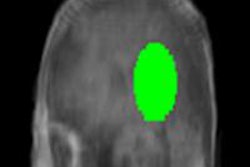
PACS is nearly ubiquitous these days. Unfortunately, that also appears true for the inefficiency of PACS workstation software, according to a pilot study from the American College of Radiology's (ACR) Image Metrix imaging contract research organization that found that the radiologists it surveyed were dissatisifed with PACS software.
In a research project sponsored by GE Healthcare and published online September 12 in the Journal of the American College of Radiology, a team led by Dr. Bruce Hillman, ACR Image Metrix's chief scientific officer, found that five radiologists surveyed all indicated that the lack of intuitiveness of their workstations resulted in inefficiencies and fatigue.
Although digital image management has been nearly universally adopted in the U.S. and Europe, aspects of electronic interpretation remain problematic, according to the authors.
 Dr. Bruce Hillman.
Dr. Bruce Hillman.
"Issues with system design and the flow of information, as well as the lack of intuitiveness with workstation operation, contribute to inefficiencies that diminish radiologists' productivity, cause fatigue that may reduce accuracy, and distract radiologists from delivering the highest quality interpretations," the researchers wrote.
To understand the effects of issues associated with PACS software and to better address radiologists' needs, GE contracted with ACR Image Metrix to perform a pilot study surveying a small number of radiologists regarding inefficiencies that negatively influence their personal and departmental workflow.
A team of ACR Image Metrix researchers collaborated with GE staff in developing a 48-item survey that was administered to five radiologists with differing subspecialties. Four of the radiologists recruited for the study were from a list of moderate- to large-sized academic hospitals, while one was from a community practice hospital.
The radiologists had a mean experience level of 24.4 years in post-training clinical practice for interpreting imaging studies (range, 7 to 39 years). While all had at least some experience using multimodality, multifunction PACS workstations, some continued to use workstations dedicated to a single purpose or modality for at least some of their practice, according to the researchers.
Inefficiency, fatigue
In the survey, all five respondents felt the lack of intuitiveness of their systems caused inefficiencies and fatigue.
"Their concerns in this regard centered largely on their current workstations not easily presenting them with the full range of tools and options available, and variability among the different user interfaces of the workstations they used daily," the authors wrote. "The effects of these problems were especially severe for new users, but respondents agreed that this initial disadvantage diminished with familiarity of use."
The respondents described a broad array of challenges and inefficiencies they had to deal with on a daily basis, rating them on a four-point scale.
There are a number of reasons why problematic aspects of electronic image interpretation have lingered, "but two key ones are that end users aren't consulted enough in the early stages of development and that the end users have a lot of individual preferences that are hard [for vendors] to address and still make a profit selling the workstation," Hillman told AuntMinnie.com.
The research proved the hypothesis that there were significant inefficiencies in imaging workstations, Hillman said.
"Progress will be iterative, so it is hard to say when, if ever, there will be a perfect system," he said. "Much will depend on the receptiveness of the environment, which is pretty hostile."
Room for improvement
The researchers acknowledged the small number of radiologists surveyed in the study, which reflects the exploratory nature of the research and limits the ability to generalize the results. However, they believe the pilot study results provide a basis for generating hypotheses for future research and also demonstrate an opportunity for imaging IT system designers to improve upon their current products, to the benefit of both radiologists and patients.
"As one respondent noted, the effects of the inefficiencies we investigated undoubtedly go beyond diminishing productivity to negatively affecting the completeness, accuracy, and cogency of imaging interpretations," the authors concluded. "Developers of future diagnostic imaging solutions have an opportunity to remedy those aspects of current systems that reduce productivity while improving the value of radiologists' interpretations."
Because the project was funded by GE, any future research on this topic would need to be conducted under the same arrangement, Hillman said.




















